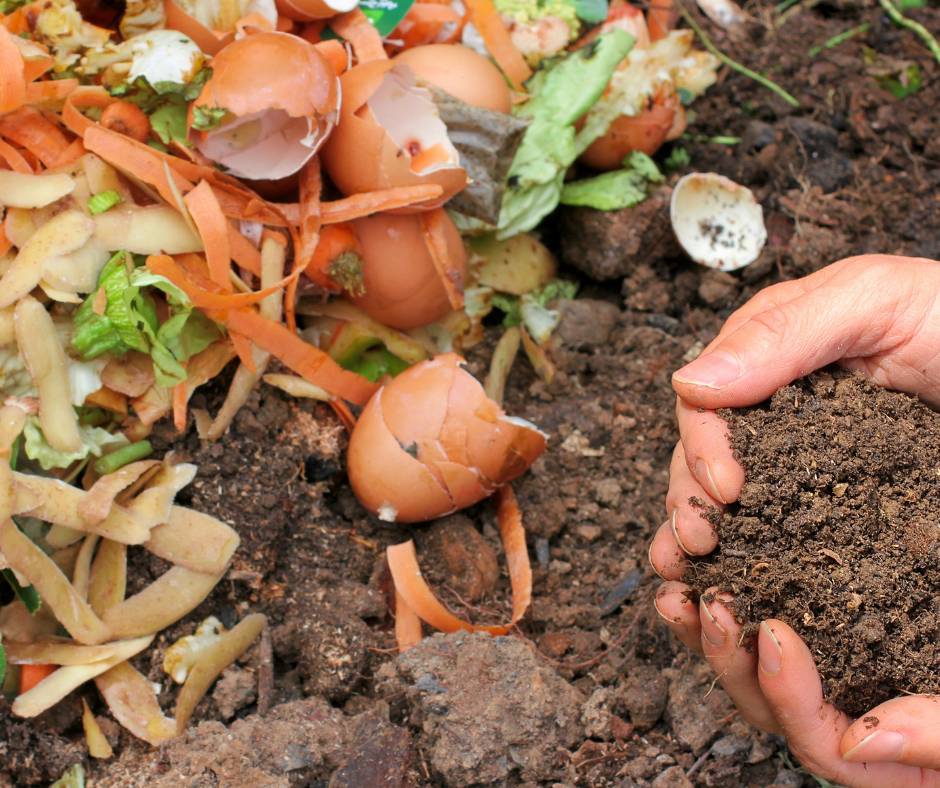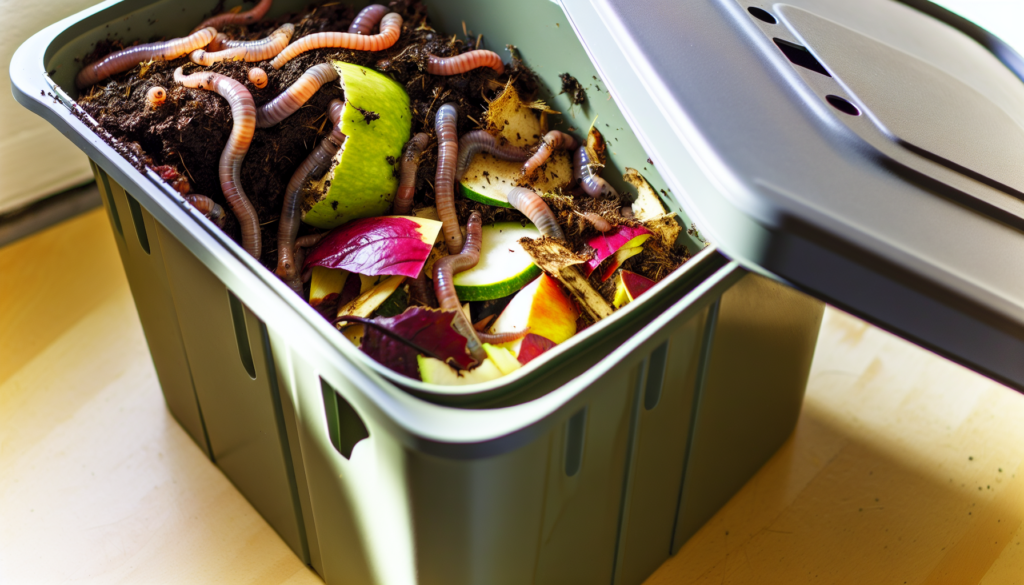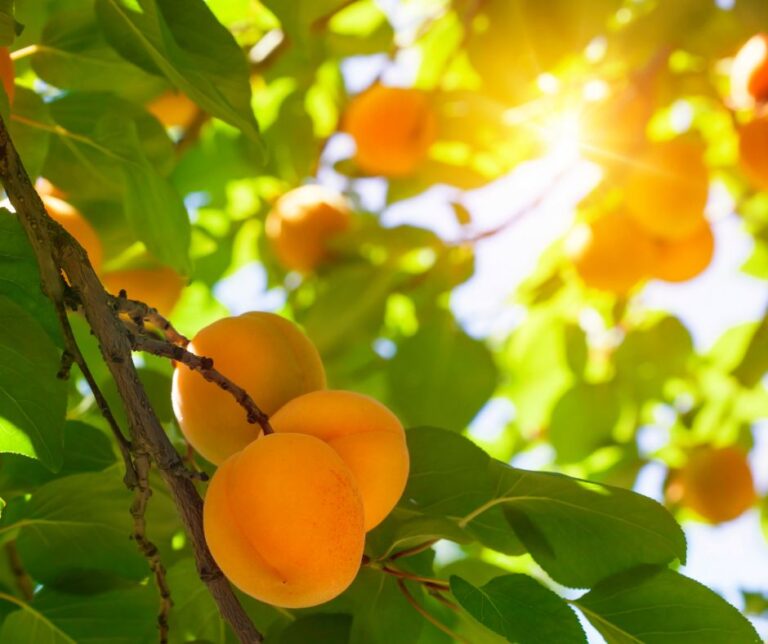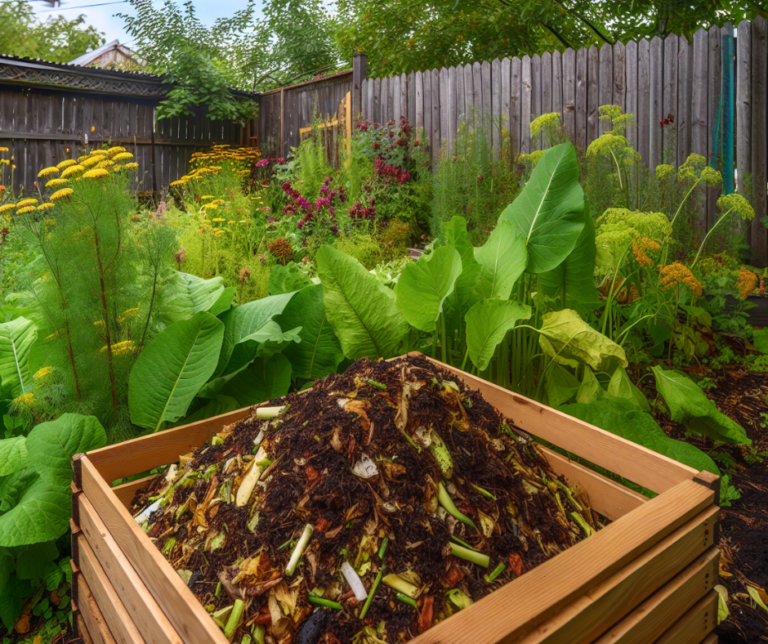Can Rice Be Composted? Here’s Everything You Need to Know
So you’ve stumbled upon that unfinished pot of leftover rice sitting in your fridge? Well, before you dismiss it as just another food waste, let’s take a closer look. Have you ever wondered: Can rice be composted? Will it magically transform from a bland, lifeless grain into a nutritious addition to your garden soil? Hold on tight, because we’re about to embark on an engagingly informative adventure through the fascinating world of composting rice!
Key Takeaways
Understanding the Basics of Composting

The science behind composting
Composting is a natural process in which organic materials, such as food scraps and yard waste, decompose over time to form nutrient-rich compost. The key to successful composting lies in creating the right conditions for decomposition to occur. This involves providing the right balance of carbon-rich (brown) materials and nitrogen-rich (green) materials, maintaining adequate moisture and oxygen levels, and managing the compost pile’s temperature.
Different types of compostable materials
Compostable materials can be broadly categorized into two types: green materials and brown materials.
Green materials are rich in nitrogen and include items like fresh grass clippings, fruit and vegetable scraps, and coffee grounds. Brown materials, on the other hand, are carbon-rich and include things like dry leaves, straw, and shredded newspaper.
Both types of materials are necessary for a balanced compost pile.
Principles of composting
Composting follows a few basic principles to ensure effective decomposition. Firstly, maintaining the right balance between green and brown materials is crucial. Aim for a ratio of roughly three parts brown to one part green. Secondly, adequate oxygen is essential for the decomposition process to occur, so be sure to turn or aerate the compost pile regularly. Lastly, maintaining an optimal moisture level of around 40-60% is vital for the microbes responsible for decomposition to thrive.
Nature of Rice

Rice is one of the most widely consumed grains worldwide, providing a staple food for millions of people. It is a versatile and nutritious grain that offers significant health benefits.
Rice as a grain
Rice is a member of the grass family and is primarily grown for its edible seeds, known as grains. These grains are milled to remove the bran and germ, resulting in white rice, or they can be kept intact to produce brown rice. The texture and taste of rice can vary depending on the variety and cooking method used.
Nutritional components of rice
Rice is a good source of carbohydrates, providing energy for the body. It also contains essential vitamins and minerals such as thiamine, niacin, iron, and magnesium. Brown rice, in particular, is a healthier option as it retains the bran and germ, which contain fiber, antioxidants, and various micronutrients.
Different types of rice
There are numerous varieties of rice, each with its own unique characteristics and culinary applications. Some popular types include long-grain rice, which is fluffy and separate when cooked, and short-grain rice, which is sticky and ideal for sushi. Other varieties include jasmine rice, basmati rice, and wild rice, each adding its own distinct flavor and texture to dishes.
Assessing Grains: Can Rice Be Composted?

Factors that make rice challenging to compost
Rice can present some challenges when it comes to composting. One factor is that rice grains can be quite small and compact, reducing airflow within the compost pile. This can lead to the formation of anaerobic conditions, which can slow down the decomposition process and result in unpleasant odors.
Potential risks of composting rice
Composting rice can pose some risks if not done correctly. If cooked rice is included in the compost pile, it can create a moist environment that promotes the growth of harmful bacteria, potentially leading to unpleasant odors or even the spread of disease-causing pathogens.
Potential Problems When Composting Rice
While rice can be successfully composted, there are a few potential problems that can arise during the process.
1. Pests attraction
Rice, both cooked and uncooked, can attract pests such as rodents and insects. These pests are attracted to the smell of food waste and can cause damage to the compost pile and its surroundings.
2. Mould and bacteria issues
If cooked rice is included in the compost pile, it can promote the growth of mould and bacteria in the compost pile due to the moisture content in the rice. While some mould and bacteria are beneficial for decomposition, an excess can lead to an unpleasant smell and potentially harmful pathogens.
3. Rice breakdown delay
Compared to other organic materials, rice may take longer to break down completely in the compost. The hard outer layer and starchy composition of rice can slow down the decomposition process.
Tips for composting rice
If you still wish to compost rice, follow these tips to minimize potential risks and challenges.
Steps to Composting Rice

To effectively compost rice, it is crucial to follow proper practices and guidelines. Here are the steps to composting rice in your own backyard.
Preparing your compost bin
Start by selecting a suitable compost bin or container. This can be a traditional compost bin, a pile, or even a compost tumbler. Ensure that the bin has good drainage and is placed in a convenient location, preferably with some shade. It is also important to regularly turn or mix the compost to provide oxygen and promote decomposition.
Amount of rice to compost
When adding rice to your compost, it is best to do so in moderation. Aim for a balanced mix of green and brown materials, with rice falling into the brown category due to its carbon content.
As a general rule, it is recommended to limit the amount of grains, including rice, to around 10% of the total compost volume. This will prevent any potential issues related to clumping and slow decomposition.
Balancing your compost mix
To achieve the ideal balance for your compost, mix rice with an assortment of nitrogen-rich materials, commonly referred to as green materials. This can include fruit and vegetable scraps, grass clippings, and coffee grounds. Combine these green materials with carbon-rich brown materials like dried leaves, wood chips, or shredded paper. The proper balance between carbon and nitrogen is vital for efficient decomposition and the production of high-quality compost.
Influence of Rice on Compost

When rice is added to a compost pile, it contributes to the overall composition and nutrient content of the resulting compost.
Nutrient contribution of rice to compost
Rice, being an organic material, contains various nutrients such as nitrogen, phosphorus, and potassium. As rice decomposes, these nutrients are released into the compost, enriching it with essential elements necessary for plant growth and health. The presence of rice in the compost mix helps create a diverse nutrient profile that can benefit a wide range of plants.
Breakdown process of rice in compost
The breakdown process of rice in compost is facilitated by the activity of microorganisms. Bacteria and fungi, along with other decomposers like worms, work together to break down the rice into simpler components. This process involves the release of enzymes and organic acids that gradually break down the complex carbohydrates and proteins present in the rice. Over time, the rice is transformed into humus, which is the final product of composting.
Solving Rice Composting Issues

To overcome the potential problems associated with composting rice, there are various solutions and best practices to implement.
Ways to repel pests
To repel pests from your compost pile, you can add natural deterrents such as crushed eggshells, citrus peels, or coffee grounds. These substances have strong scents that pests tend to avoid. Additionally, maintaining a proper balance of carbon and nitrogen, along with regularly turning the compost, will help discourage pests by creating an environment that is less attractive to them.
Preventing mould and bacteria growth
To prevent the overgrowth of mould and bacteria, it is essential to maintain proper moisture levels in the compost pile. Ideally, the compost should be moist, similar to a wrung-out sponge. If the compost becomes too wet, add dry carbonaceous materials like shredded paper or dried leaves to absorb the excess moisture. Regularly turning the compost will also help aerate it and prevent the accumulation of moisture.
Speeding up rice decomposition
To expedite the breakdown of rice in compost, consider chopping or grinding the rice into smaller pieces. This increases the surface area, allowing for faster microbial activity and decomposition. Including nitrogen-rich materials like grass clippings or vegetable scraps can also provide a boost to microbial activity and speed up the overall decomposition process.
Cooked Rice: Dealing with it in Composting

Difficulties of composting cooked rice
Composting cooked rice can be trickier compared to uncooked rice due to the increased moisture content.
Cooked rice tends to clump together, preventing proper airflow within the compost pile and creating pockets of anaerobic conditions. This can lead to the production of foul odors and slow down the decomposition process.
Possible risks of composting cooked rice
In addition to the challenges posed by increased moisture and reduced airflow, composting cooked rice can potentially attract pests like flies or rodents. The moist and nutrient-rich environment created by cooked rice can be highly appealing to these unwanted visitors.
Moreover, if the cooked rice contains any added salts, oils, or sauces, it may disrupt the balance of the compost pile and affect the overall quality of the compost produced.
Best practices in composting cooked rice
To compost cooked rice successfully, it’s crucial to address the difficulties and risks associated with it.
Firstly, break up any clumps of cooked rice and mix it with bulking agents like dry leaves or shredded newspaper to improve aeration.
Additionally, layering the cooked rice with other compostable materials can help spread the moisture more evenly throughout the pile.
Lastly, monitor the compost pile regularly, ensuring it remains sufficiently aerated and maintaining proper moisture levels to prevent foul odors and pest infestation.
Navigating Different Types of Rice for Composting

Composting white rice
White rice can be composted, but it’s important to consider the challenges it poses. Due to its small size and compact nature, white rice can contribute to compaction within the compost pile, limiting airflow. To minimize this, ensure the rice is mixed well with larger, bulkier materials and regularly turn the pile to maintain good aeration.
Composting white rice may also attract pests, so it’s crucial to monitor the compost pile and take appropriate measures to deter them.
Composting brown rice
Similar to white rice, brown rice can be composted with some precautions. Its larger grain size and higher fiber content make brown rice less likely to contribute to compaction in the compost pile. However, it’s still advisable to mix it with other compostable materials and turn the pile regularly. As with any rice, be mindful of pests and take necessary steps to prevent any infestations.
Composting wild rice
Wild rice, despite its name, is not actually a type of rice but rather a type of aquatic grass. It can be composted with other organic materials, following the same considerations as with white or brown rice. Ensure it is properly mixed into the compost pile and monitor for any potential pest issues.
Exploring Other Grains for Composting

Composting wheat
Wheat can be composted successfully, provided it is chopped or broken up to facilitate decomposition. Its high carbon-to-nitrogen ratio makes it an excellent addition to the compost pile, contributing to a balanced mix of materials.
Composting oats
Oats can be composted as well, but it’s essential to break them up, especially if they come in the form of whole oat grains. This ensures better airflow within the compost pile and promotes faster decomposition.
Composting barley
Barley, like wheat and oats, can be composted effectively. Breaking up barley grains before adding them to the compost pile will aid in decomposition and prevent clumping. Barley straw can also be used in composting, providing carbon-rich material that helps maintain a healthy composting environment.
Tips for Composting Rice Safely

Ratio of rice to other compost materials
When composting rice, it’s important to maintain a proper ratio of rice to other compostable materials. Aim for a balanced mix of carbon-rich (brown) and nitrogen-rich (green) materials, with rice constituting only a small portion of the overall compost pile. This ensures that the pile remains well-aerated and prevents the rice from compacting or creating an imbalanced compost.
Incorporating rice into the compost pile
To incorporate rice into the compost pile effectively, mix it well with other compostable materials. Ensure that the rice grains are broken up or evenly distributed throughout the pile to prevent clumping and promote airflow. Layering the rice with other materials can also help ensure even moisture distribution.
Signs your compost pile is balanced
A balanced compost pile exhibits certain signs that indicate its overall health and proper decomposition. These signs include a pleasant earthy smell, a dark and crumbly texture, and a moderate temperature between 130°F and 160°F (55°C and 70°C).
Regularly monitoring these indicators will help you gauge the progress of your compost pile and make adjustments if necessary.
Preventing Problems when Composting Rice

Monitoring temperature of compost pile
Regularly monitoring the temperature of your compost pile is essential for successful composting, especially when dealing with rice. Rice has the potential to create anaerobic conditions that can lead to foul odors and slow down decomposition. To avoid this, maintain a compost pile temperature between 130°F and 160°F (55°C and 70°C) by turning the pile regularly and ensuring sufficient airflow.
Avoiding pests when composting rice
Rice can attract pests like rodents, flies, or ants if not managed properly. To deter pests, avoid adding cooked rice or rice with added sauces, oils, or salts to your compost pile. These additions can make the compost pile more attractive to pests. Additionally, cover the compost pile with a sturdy lid or fence off the area to prevent rodents from accessing the compost.
Understanding and managing odor issues
Odors can be a common issue when composting rice, especially if the pile becomes compacted or has too much moisture.
To prevent unpleasant odors, ensure proper aeration by regularly turning the compost pile. If the pile becomes too wet, add dry brown materials like shredded leaves or straw to absorb the excess moisture. Avoid compacting the pile, as this can create anaerobic conditions that promote odor-producing bacteria.
Can You Compost Rice in a Worm Bin?

Vermicomposting the process of composting with worms, offers an alternative method of recycling organic waste efficiently. But can you compost rice in a worm bin? Let’s find out.
Understanding vermicomposting
Vermicomposting involves the use of special composting worms, such as red wigglers, to break down organic waste into nutrient-rich vermicompost. These worms are highly efficient at consuming and decomposing a wide variety of organic materials, making vermicomposting an ideal solution for composting in smaller spaces.
Suitability of composting rice in a worm bin
Yes, you can compost rice in a worm bin. Worms can consume both cooked and uncooked rice, as long as it is not seasoned or mixed with oils. However, it is important to add rice in moderation to prevent clumping and slow decomposition. Cutting or breaking the rice into smaller pieces can further facilitate its breakdown and improve feeding efficiency. Remember to monitor the bin’s moisture levels and avoid overfeeding the worms to maintain a healthy and balanced worm bin ecosystem.
Final Thoughts on Composting Rice

Beneficial microbial activity with rice composting
When done correctly, composting rice can foster beneficial microbial activity in your compost pile. The microorganisms responsible for breaking down the rice into nutrient-rich compost play a vital role in the decomposition process. By providing a suitable environment for these microorganisms, you contribute to the overall health and vitality of your compost pile.
Impact on soil health
Using rice compost in your gardening endeavors can have a positive impact on soil health. The nutrient-rich compost derived from rice can improve soil structure, enhance water retention, and provide essential nutrients for plant growth. It also helps promote beneficial microbial populations, which contribute to overall soil fertility and resilience.
Overall sustainability impression
Composting rice, like any organic material, is a sustainable practice that helps reduce waste and greenhouse gas emissions. By diverting rice from the landfill and turning it into nutrient-rich compost, you contribute to a more sustainable and environmentally friendly approach. Incorporating compost into your gardening practices closes the nutrient loop, reducing the need for synthetic fertilizers and promoting a more sustainable way of nourishing plants.
Conclusion: Composting Rice Effectively
In conclusion, rice can be composted effectively, either in a traditional compost pile or a worm bin. Incorporating rice into your composting routine is a simple and effective way to enhance the health and productivity of your plants.
While the process of composting rice is typically uncomplicated, it’s crucial to stay mindful of potential concerns like attracting pests, fostering mold and bacteria, and experiencing delayed decomposition. By following best practices and implementing solutions to these problems, you can overcome any challenges and compost rice effectively.
So, next time you come across a bowl of leftover cooked rice, consider composting it rather than tossing it in the trash. With proper care and management, rice can be successfully composted, adding value to your garden and the environment. Happy composting!
Frequently Asked Questions







